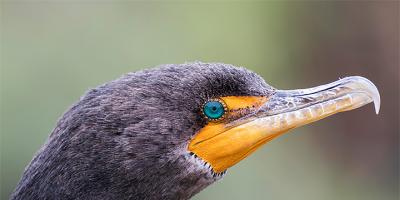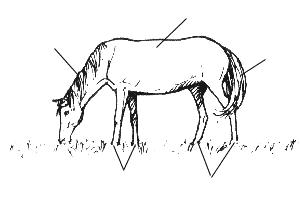History of the origin of the variety and its description
A hybrid of raspberries and blackberries called “Tayberry” appeared not so long ago; in 1969, it was selected at the Scottish Institute of Plant Growing. Blackberries of the “Aurora” variety were chosen as the main plant for crossing, which were pollinated with pollen from selected raspberries. The final result was quite successful, because the new plant combined the excellent taste properties of its prototypes. Juiciness, slight sourness and a pleasant aroma, which is different, but at the same time similar to the smells of raspberries and blackberries - these are the qualities that this crop has.
The berries of the "Taybury" variety are quite large in size and colored in a bright purple hue. The largest specimens can reach a length of as much as 6 cm. Another pleasant feature of this plant is its excellent fertility. From 1 hectare of area you can harvest about 9 tons of crop. “Taybury” received its name thanks to the Tai River, on the banks of which the Institute of Plant Growing was built.
Blackberry-raspberry "Taybury" has the appearance of a spreading bush with many long strong branches densely studded with small thorns. The foliage is dark green and has a trifoliate shape. The fruits of this plant begin to ripen in mid-July, and the fruiting period itself lasts quite a long time.
The variety "Taybury" has characteristic feature: it produces very few root shoots, so it is usually propagated by root cuttings or aerial buds. Effective way breeding of this crop is propagation by layering, in which the shoot takes root in the ground without being separated from the mother bush.
The average height of the plant reaches 2.5 m. Among the advantages of the Taybury blackberry, it is worth highlighting its high resistance to diseases and pests, as well as its undemandingness to soil.
Blackberry "Tybury" planting and care
Features of growing crops
If you decide to purchase blackberry seedlings to plant it on your plot, be responsible when purchasing such a product. It is advisable to choose plants with several shoots, and the branches should look healthy and strong. Make sure that the foliage is green and fresh, without spots. The roots must be inside the earthen clod, be strong, not dry and not brittle.
When choosing a site for planting, give preference to a well-lit place that is not exposed to drafts. Blackberry "Tybury" loves warmth and sun, as well as nutritious loose soil. Please also note that the soil must first be cleared of perennial weeds. Since the crop will reach significant heights as it grows, provide it with support to which it will cling. You can create the support yourself by digging two-meter posts into the ground and stretching several rows of wire between them.
When starting to plant blackberries, dig a hole in the prepared area with a diameter and depth of about 50 cm. Also prepare a soil mixture by mixing garden soil with 5 kg of manure, 100 g of superphosphate and 50 g of potash fertilizers. Dig the bush to the level of the root collar. After planting, the plant must be pruned, shortening the shoots to 25-30 cm. Having sprinkled the roots with earth and compacted them, pour the blackberry with enough water, about 5 liters of liquid per bush. To prevent the water from evaporating too quickly and the soil from drying out and cracking, mulch the area around the trunk with peat or compost. Make a layer of mulch 7-8 cm high.
The development period of the "Tayberry" variety is 2 years. In the first season, buds form on the bush, and by the second year the blackberry begins to bear fruit. At the same time, old shoots die off on the plant. It is during this period that you need to form the crown of the bushes, so that later it will be convenient for you to work with the plant and harvest from it. The most common method of forming blackberry bushes is fan-shaped. It means that the branches of the past year, on which the berries have ripened this season, are tied to a trellis, pointing in one direction. Young shoots are directed in the other direction, creating a semblance of a plant fan.
With the onset of spring, when sap flow has not yet begun, the plant is subjected to formative pruning. Overly long branches and those that develop incorrectly are pruned by about a third of their length.
During the fruiting period, blackberries may require slight shading, since the berries deteriorate under the influence of direct sun rays. To create shade, you can stretch a protective net over the bushes. Such a net will not only protect the plant from the hot sun, but also protect it from birds. The Tiberi blackberry harvest takes a long time to mature and can be harvested right up to the onset of cold weather.

Plant care
Caring for any plant consists, first of all, in organizing a watering system. The most important period when blackberries need regular irrigation is when they active growth, as well as fruiting. "Tayberry" needs to be watered until the very end of the season, until the onset of cold weather.
Once every 3 years, it is customary to fertilize blackberries with a large amount of compost. It is applied to each bush at the rate of 4-5 kg per plant. During other periods of the culture’s life, it is also fed with nitrophoska or some other mineral compounds. There should be about 20 g of such fertilizer per 1 m² of area.

Propagation of raspberry-blackberry "Tybury"
The hybrid of raspberries and blackberries "Taybury" can be propagated in several ways. One of the popular methods is culture propagation by layering. This procedure is considered very effective, as it ensures good survival of young plants and subsequent rich harvests. Reproduction by layering is carried out in several stages:
- Near mother plant loosen the soil to a depth of 30 cm. They also add not a large number of coarse sand and mixed with soil. All clods of earth encountered during digging are crushed.
- Having selected the desired branch, it is freed from foliage to a length of approximately 30-40 cm.
- Then a node is found on the shoot and an oblique incision 5 cm long and a “tongue” are made there. The damaged area is immediately disinfected.
- The branch is bent to the ground and placed with a cut into the prepared hole. The “tongue” is bent and fixed, and the above-ground part of the shoot is placed on a vertical support.
- The cut is sprinkled with earth, compacted a little and watered abundantly. The branch should take root in about 1-1.5 years. After this time, you can check whether roots have appeared on the shoot. To do this, the lump of earth around the shoot can be slightly lifted with a pitchfork.
- In autumn or spring, a new plant is cut off from the mother bush and transferred to a new place.
Another way to propagate Tybury blackberries is by cuttings. It consists of the following:
- In the first weeks of summer, cuttings are cut from the mother plant - fragments of young green branches on which at least 1 bud is present.
- Then prepare the containers for planting by filling them with a mixture of sand and peat.
- Cuttings are planted in these containers, the soil is moistened and covered with film, and then placed in a warm place. The cuttings are kept in greenhouse conditions for about a month, providing them with good humidity.
- When the cuttings take root, they can be transferred to the garden plot.
Sometimes "Taybury" blackberries are propagated by root cuttings. To do this, first dig the plant bush out of the ground and select suitable roots. They must be strong, healthy and exceed 5 mm in thickness. Such roots are divided into fragments of 5-6 cm and the cuttings are dug into the ground to a depth of 15 cm. The plants planted on top are sprinkled with fertile soil, well moistened and periodically fed with fertilizers. From time to time, the soil is loosened so that the roots have access to oxygen.
As you can see, growing Tibery blackberries on your own plot is not at all difficult. The main advantages of such a crop are its unpretentiousness, frost resistance, resistance to diseases and pests, high yield and excellent taste.

Blackberry "Tybury". Video
A vigorous hybrid of raspberries and blackberries with spreading, prickly, creeping shoots, which practically does not produce root shoots. The thorns on the shoots are small. The leaves are trifoliate, dark green in color. The fruits are very large, elongated-conical, purple, juicy, up to 4 cm long. They ripen from mid-July to the end of August. Universal purpose. For the winter, the branches must be bent and covered. The hybrid is resistant to pests and diseases, and is affected only by raspberry aphids and stem gall midges.Agricultural technology: Before planting, store seedlings at a temperature of 0 - +2ºС. When buds sprout, it is necessary to move the plant to a cool, well-lit room to avoid stretching the shoots. Planting plants with young shoots in the ground is permissible only after the threat of frost has passed.
Raspberry-blackberry Hybrids should be planted in well-lit areas protected from the wind, on soils rich in organic matter. It is very important to clear the soil of perennial weeds, especially rhizomatous ones, before planting. Prepared for each bush landing hole dimensions 40x40x40 cm. Before planting, add 5 - 6 kg of well-rotted manure, 100 - 150 g of superphosphate, 40 - 50 g of potassium fertilizers and mix thoroughly with the soil.
The seedlings are buried to the level of the root collar. Before planting or immediately after it, the above-ground part is cut off, leaving 30 - 40 cm. Water at the rate of 5 liters of water per bush, the soil must be mulched with peat or compost, a layer of 6 - 8 cm.Planting raspberry-blackberry hybrids, you need to consider what the size of an adult bush will be. Trellis for blackberries should be at least 2 m high. When forming in a fan, the distance between plants should be at least 2.5-3.5 m.
U raspberry-blackberry shoots have a two-year development cycle: in the first year they grow, lay buds, and in the second they bear fruit and die. To make caring for plants and harvesting easier, we recommend the following method of forming plants - directing fruit-bearing shoots in one direction, and the current year's shoots in the other (fan formation). Young shoots are tied up in the summer as they grow. Old fruiting stems that will no longer produce berries are cut out close to the ground and removed from the site.
Bushes for the winter raspberry-blackberry It is advisable to cover. The shoots are carefully laid on the ground, trying not to damage them. The bases of the bushes are covered with peat and leaves from above, and later covered with snow.
In the spring, before the active swelling of the buds, the bushes are opened and formative pruning is carried out: overgrown shoots are shortened (from 1/3 to half the length of the shoot), shoots growing in an undesirable direction are pinched.
Ezhemalina is a hybrid of raspberries and blackberries, a berry crop that incorporates the most best qualities parent varieties, which were raspberries and blackberries. The result is an interesting crop with incredibly tasty and aromatic berries, unpretentious in care and cultivation. Thanks to these qualities, blackberry raspberries are gaining more and more popularity among gardeners, and the number of people who want to enjoy the aromatic berries with useful composition and the simultaneous taste of blackberries and raspberries increases every year.
The date of birth of the berry hybrid, which was based on blackberries and raspberries, is considered to be 1969. The variety was developed in Switzerland through selection through pollination with raspberry and blackberry pollen. The result was a plant bearing juicy, tasty and aromatic dark-colored fruits.
What are the best qualities of two plants combined in this hybrid berry? The qualities of blackberries are abundant fruiting with voluminous fruits, ease of care, the qualities of raspberries are a rich berry aroma, increased frost resistance.
An analogue to this variety is considered to be a hybrid of raspberries and strawberries (raspberry, ezhklubnik).
The fruits of the raspberry tree are characterized by a sweet taste with pronounced sourness, with the flavor of both berries of the parent species.
When breeding most varieties of black raspberries, which bear large berries, modern raspberry-blackberry hybrids were used. Thanks to their qualities, a large number of branched clusters, similar to blackberry ones, are formed on the bushes, while the winter hardiness of raspberry varieties is low. Black raspberries differ from blackberries. Traditional and chokeberry varieties of raspberries ripen in July; of course, the timing of the ripened harvest may shift depending on the weather and geographic area. Blackberries, no matter how early the variety, ripen later than raspberries. Because of this, mid-late and late varieties are grown exclusively in the southern regions, where the fruits can ripen completely before the first frosts arrive.
Video “Description”
From the video you will learn a lot of new and interesting things about this type of berry.
Varieties of raspberries
The hybrid berry crop Ezhmalin can be more similar to raspberries or blackberries, and the weight depends on whose properties the plant inherited more from the parent species during selection.
Blackberry fruits are characterized by high taste qualities, and when crossed with raspberry crops, the berries acquired an even more delicious aroma. Thus, the berry hybrid has absorbed the best flavors from both cultures.
The best varieties of this variety are: Loganberry, Boysenberry, Tayberry, Sylvan, Cumberland, Texas, Tummelberry, Yaig, Marion. Almost all varieties are of American origin.
Loganberry
The popular berry, bred in the USA, combines hybrid characteristics. Among the characteristics: a bush of medium power, with creeping, gray-green shoots without thorns. At the beginning of the growing season, shoot formation is weak, but with age the bush becomes more active and produces more of them. The color of the fruit when ripe is dark burgundy, the shape is elongated, voluminous, weighing up to 10 g, the taste is sweet, honey with a strawberry aftertaste. Variety – early ripening period. The berries ripen from late summer until the first frost. Productivity is 9 kg per bush. Reproduction is from rooting the tops of the shoots of the first year, which are already woody. 
During planting, maintain a gap between shrubs of 1 m, and row spacing is 1.5-2 m. The plant needs a trellis, at least 1.8 m high. After planting, it needs pruning to 25 cm from ground level, and abundant irrigation and mulching.
Berries are a storehouse of useful organic components: antioxidants, vitamins (A, C, folic acid), microelements (iron, magnesium, phosphorus), etc. In order to consume such a beneficial berry for the body, it is prepared in the winter: dried, made into jams, sorbet, confitures, compotes and jams are prepared.
Boysenberry
The American hybrid is the most famous among the raspberry crops. By external characteristics The shrub is very similar to creeping blackberry. The bushes bloom with large white flowers. Currently available in two subtypes: with and without spikes. 
The fruits are large, burgundy-chocolate color, oval. The taste is sweet and sour, blackberry predominates. It bears fruit at the end of July - August. In winter, the branches are laid to the ground; it tolerates low temperatures without problems. In spring it requires a garter on a trellis.
Tayberry
The Tayberry raspberry-blackberry hybrid bears large, long berries, reaching up to 6.5 cm in length, with a dark crimson color. Productivity – on high level, from 1 hectare to 9 tons of harvest. Fruiting in Tayberry bushes is long, starting in mid-summer. Tayberry (Tayberry) is a branched shrub with powerful branches, up to 2.5 m tall, needs support and tying up.
When propagating, the following problem may arise: there are practically no root shoots. Because of this, they are mainly propagated by root cuttings or aerial buds. 
Resistance to diseases and pests is high. The development period of this variety lasts 2 years. In the first year, buds form on the plant, and in the second, fruiting begins and the old shoots gradually die off. At this time, the crown of the bushes is formed to make caring for the plant and picking berries easier. As a rule, shrubs are formed in a fan fashion.
Silvan
A hybrid of a high-yielding variety with early ripening berries. When picked early, the fruits are painted scarlet, while berries picked later reach a dark, almost black hue. The harvest is in the form of large oval berries, weighing up to 13g, growing in clusters of 10-15 pieces. Silvan is considered the best-tasting berry hybrid. Productivity up to 5 kg per bush. When harvested, the ripe berries have a rich aroma and a sweet aftertaste. A shrub with creeping shoots with thorns. 
Cumberland
A hybrid variety with black-blue fruits with a glossy surface. By taste qualities– aromatic, honey-like and dense, excellent for transportation.
It is considered the most proven and winter-hardy variety blackberry (black) raspberries. It is very resistant to diseases and does not clog the garden, as it does not sprout. The ripening period is average. A bush 1.5-2 m high with thick shoots, curved, pubescent, strongly spiny with a thick waxy coating. 
The crop is a winter-hardy, perennial subshrub, highly productive under the conditions of proper agricultural technology. It has the peculiarity of growing in one area for more than 15 years, but bears fruit abundantly in the first 12 years.
The variety has long flowering and good yield. Even with the onset of severe frosts, the bushes do not need to be covered. True, black raspberries are not so ideal: there are a lot of seeds in the berries, an abundance of thorns on the shoots and the bushes are very thick.
Cumberland raspberries are eaten fresh, and prepared for winter in the form of frozen berries, jams, preserves, and juices.
Growing
Raspberry-blackberry berry hybrids are valuable plants, they are more productive, their fruits are much larger, in contrast to the parent crops. Thanks to these characteristics, many gardeners grow it on their site.
Reproduction of a hybrid berry crop is carried out by root cuttings and root suckers. Growing using root cuttings is considered more effective. For these purposes in early spring dig up roots 5-7 mm in size and cut them 10-15 cm long. Planting material planted in pits. 
A simpler method of cultivation is to root shoots from annual shoots up to 35 cm high. In August, shoots are rooted. The ends of the shoots are placed into holes 20-25 cm deep and covered with earth. Each such shoot will produce 3-4 young seedlings in the spring, which will be suitable for planting on the main site.
Planting is done in well-lit places, according to a 40x40x40 cm pattern. Humus mixed with soil is added there. It needs a trellis; in the summer it produces many new replacement shoots. Best time for planting - October, in the southern regions - the end of October.
Care
The tops of plants are pinched when they reach 2.5 m in length. When the base of the bush gets stronger, they will begin to ripen side shoots, which are distributed on the bottom of the trellis.
Many berries have a prolonged fruiting period; harvest lasts until the end of autumn. In the fall, fruit-bearing shoots are cut to the ground, and the young ones are placed on a trellis.
At the beginning of summer, urea should be added and fed with infusions of nettle or cow manure. You can fertilize with nitrogen fertilizers, which will enhance the growing season of the plant. In regions with snowless winters, mulching is carried out. 
Since raspberries are not prone to rot, they are also protected from frost by covering them with humus, sawdust, hay, straw, etc.
Video “Care”
From the video you will learn how to care for raspberries.
A vigorous hybrid of raspberries and blackberries with spreading, prickly, creeping shoots, which practically does not produce root shoots. The thorns on the shoots are small. The leaves are trifoliate, dark green in color. The fruits are very large, elongated-conical, purple, juicy, up to 4 cm long. They ripen from mid-July to the end of August. Universal purpose. For the winter, the branches must be bent and covered. The hybrid is resistant to pests and diseases, and is affected only by raspberry aphids and stem gall midges.
Agricultural technology: Before planting, store seedlings at a temperature of 0 - +2ºС. When buds sprout, it is necessary to move the plant to a cool, well-lit room to avoid stretching the shoots. Planting plants with young shoots in the ground is permissible only after the threat of frost has passed.
Raspberry-blackberry Hybrids should be planted in well-lit areas protected from the wind, on soils rich in organic matter. It is very important to clear the soil of perennial weeds, especially rhizomatous ones, before planting. A planting hole measuring 40x40x40 cm is prepared for each bush. Before planting, 5–6 kg of well-rotted manure, 100–150 g of superphosphate, 40–50 g of potassium fertilizers are added to it and thoroughly mixed with the soil.
The seedlings are buried to the level of the root collar. Before planting or immediately after it, the above-ground part is cut off, leaving 30 - 40 cm. Water at the rate of 5 liters of water per bush, the soil must be mulched with peat or compost, a layer of 6 - 8 cm.Planting raspberry-blackberry hybrids, you need to consider what the size of an adult bush will be. Trellis for blackberries should be at least 2 m high. When forming in a fan, the distance between plants should be at least 2.5-3.5 m.
U raspberry-blackberry shoots have a two-year development cycle: in the first year they grow, lay buds, and in the second they bear fruit and die. To make caring for plants and harvesting easier, we recommend the following method of forming plants - directing fruit-bearing shoots in one direction, and the current year's shoots in the other (fan formation). Young shoots are tied up in the summer as they grow. Old fruiting stems that will no longer produce berries are cut out close to the ground and removed from the site.
Bushes for the winter raspberry-blackberry It is advisable to cover. The shoots are carefully laid on the ground, trying not to damage them. The bases of the bushes are covered with peat and leaves from above, and later covered with snow.
In the spring, before the active swelling of the buds, the bushes are opened and formative pruning is carried out: overgrown shoots are shortened (from 1/3 to half the length of the shoot), shoots growing in an undesirable direction are pinched.
Raspberries are one of the people’s favorite berries; in addition to being grown in gardens, this berry can be found in forest clearings and forest edges. The raspberry's closest relative, the blackberry, is also popular and very similar to the raspberry. Have you heard about ezhemalina and do you know what it is?
– this variety is one of the best among the raspberries. This raspberry-blackberry hybrid is quite new variety, the berries of which have an amazing aroma and taste, superior to both raspberries and blackberries. Initially, this hybrid was prickly, with a powerful bush. Nowadays, thornless plants are being bred, but the size and yield of these species is less than that of thorny crops. Boysenberry raspberry begins to bear fruit at the end of July and continues until the end of August. As the berries ripen, they change color from deep cherry to an inky shade. The berries are glossy, large, up to 12 g. You can collect up to 5 kg of berries from one bush. 
Did you know? Raspberries - medicinal plant and one of the most delicious medicines. Our distant ancestors used medicinal purposes not only berries, but also stems, leaves and flowers of raspberries. Today, only the lazy do not know about the benefits of raspberry jam and the incomparable taste of tea made from raspberry sticks.
Darrow
Ezhemalina variety Darrow – This is a bush up to three meters high, with strong, upright, prickly stems. The variety has decorative finger-shaped leaves. The berries are small - up to 4 g in weight, when ripe they are almost black, glossy, elongated in shape. The variety is tall and the shoots are long, therefore, so that under the weight of leaves and berries, and the variety’s yield is high, the stems do not break, they need a garter. In terms of taste, Darrow is inferior to Boysenberry, since the taste has a certain sourness. But Darrow has excellent winter hardiness, withstanding temperatures down to -34 degrees. This allows it to be grown in regions with cold weather conditions. The yield of the hybrid is encouraging: up to 10 kg of berries can be harvested from one bush.
Important! To plant Ezhmalina, you need to select an area that is protected from drafts, illuminated, and at a deep level. groundwater, with drained and nutritious soil.
Ezhemalina Loganberry, as stated in the description of the variety, is one of the most famous raspberry-blackberry hybrids bred in the USA. The hybrid is distinguished by a creeping bush; shoots can be with or without thorns. In the Thornless Loganberry variety, the stems and petioles of the foliage, as well as the foliage itself, are covered with soft hair. The foliage of the hybrid is grayish-green, with a silvery lower part of the plate. The bush is not particularly branched, but as it grows, the number of side shoots increases. The ripening period is the same as for raspberries. The berries are cone-shaped, up to 4 cm in length, and about 2 cm in diameter, the weight of the berries is up to 8 g. The taste is more similar to the sweetness of raspberries than blackberries, the color of the berries is also light - raspberry in color. The variety's clusters bear up to six berries; up to 6 kg can be collected from one bush. 
Tyberry raspberry varietyIt is distinguished by long, creeping shoots of burgundy color, with small thorns. Flowering begins in July, and berries ripen in the second half of August. On hanging clusters there are up to six almost burgundy, elongated berries. The taste of the berries is similar to raspberry, and the pleasant aroma is reminiscent of candy. The Tayberry raspberry variety has good yield indicators - 5 kg per bush.
The main advantage of the variety is resistance to diseases. In addition, the variety grows on all types of soil. The shoots of the variety need to be tied to trellises, and they must be positioned correctly: the stems should not shade each other. The hybrid responds well to the addition of organic matter in early spring.

Attention! In cold climate regions creeping varieties Raspberries need to be prepared for the winter. Remove the stems from the supports, lay them on the ground and cover. Straw, foliage, peat, and spruce branches can be used as covering material.
Texas
Texas variety raspberries described as a crop suitable for cultivation in regions with frosty winters. The plant bears fruit well even in cold summer conditions. The downside of the variety is the abundance of thorns and not too sweet taste. The advantage is the yield of the variety - up to 6 kg of berries per bush and high productivity - up to 15 years. This hybrid of blackberries and raspberries has a bush with creeping shoots, the length of which is up to 4 m. Large leaves are green at the top and whitish at the bottom. The bush blooms with fragrant large flowers; by the way, there are even thorns on the peduncle. The berries, when ripe, turn from scarlet to deep burgundy. The taste of the berries is sweet and sour.
Interesting! In ancient times, blackberries were considered magical plant, many pagan religions and cults of Europe used blackberries in their rituals. In everyday life, blackberries, or rather their juice, were used to dye fabrics.
A hybrid of blackberries and raspberries combines the best qualities of both berries. Thanks to its rich composition, Ezhemalina has undoubted health benefits. The berries contain micro- and macroelements such as magnesium, zinc, calcium, copper, iron, potassium, in addition, vitamins B, K, PP and E. Regular consumption of berries will saturate the body with almost all the substances it needs.








